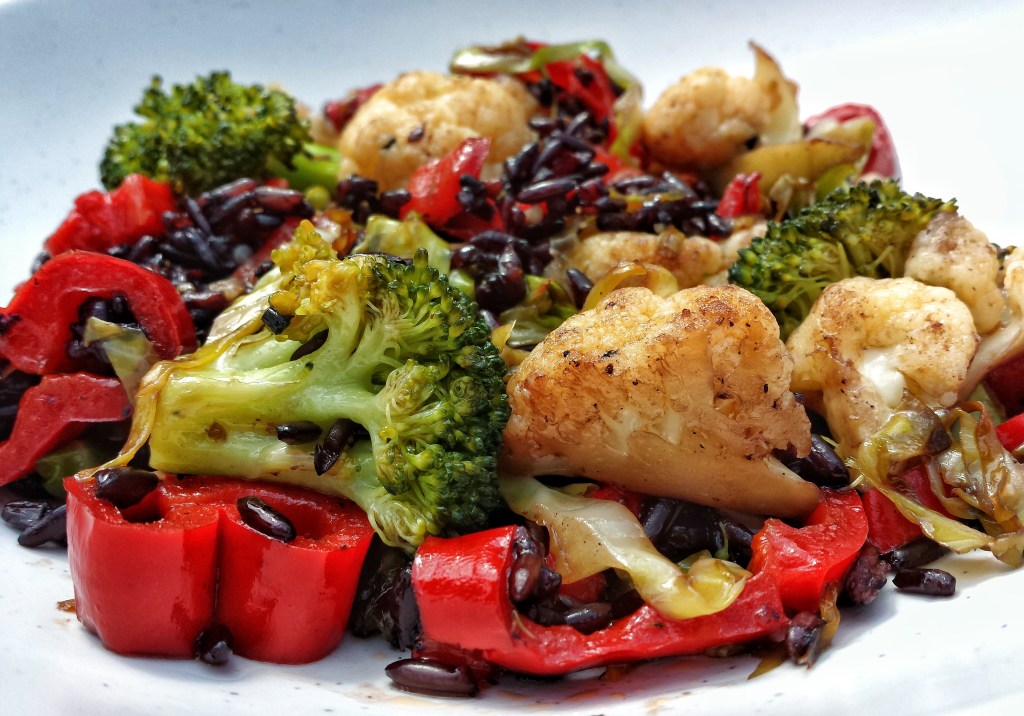Before I get to the food part, I would like to talk with you a little bit about Liver Detoxification.
Do you know what Liver Detoxification it? It is the biotransformation of a fat-soluble compound, which can not be excreted in urine or bile, to a water-soluble compound which can be easily excreted from your body.
Your liver is the most important organ in the body when it comes to keeping you healthy and getting rid of all sorts of toxins. It quietly engages in chemical detoxification processes every day to keep your body healthy and reduce the effects of toxins.
Some of the toxins are produced by your own body, i.e toxins from the gut, hormones and inflammatory chemicals such as histamine but most come from the environment.
A few examples are here:
Endogenous (from inside) toxins:
• The majority of toxins originate from the digestive system – the products and by-products of their digestion function
• Stress
• Inflammation
• Oxidative stress
• Mechanical problems – spinal alignment, nasal or intestinal obstruction
Exogenous (from environment) toxins:
• Lifestyle – smoking, alcohol
• Medications and drugs
• Foods – high sugar, trans-fatty acids, processed food
• Environmental – lead in pollution from traffic, chlorine and fluorine from water, insecticides, herbicides, solvents, metals, plastic…
• Biological inhalants – mould, pollen, algae..
• Radiation – television, computers
The liver’s main role in detoxification involves a three-step process, Phase 1, Phase 2 and Phase 3. If these phases are out of balance, then you become very sensitive to toxins and you health starts to suffer.
Here are just a few common signs and symptoms of suboptimal detoxification:
• Gastro-Intestinal – halitosis, bitter taste, bloating, fatty stools, constipation, diarrhoea,
intolerance to fatty foods, tender swollen liver, gallbladder problems…
• Immune – food allergies, skin issues, asthma, recurrent infections, adverse reactions or sensitivity to environmental chemicals, odours or nutritional supplements
• Hormonal – stress, infertility, PMS, being overweight, depression…
• Nervous system – headaches, dementia, poor memory and concentration, depression, anxiety or mood swings
• Recurrent headaches
• Muscle aches and weakness
• Paraesthesia and neuralgia
• Chronic fatigue and lethargy
• Anaemia
Sol let’s talk about these phases of detoxification in a little bit more details.
Phase 1 of liver detoxification involves breaking down toxins so that they can be processed. Toxins are broken down into more reactive and toxic molecules which are ready for further metabolism by Phase 2 of liver detoxification.
If Phase 2 process is not working properly and the toxins are not further metabolised, they may cause damage to proteins, RNA and DNA in our cells, causing increased risk of disease, such as cancer, lupus, Parkinson’s disease, adverse drug responses and many others.
Nutrients that mediate Phase 1 detoxification include turmeric, resveratrol and green tea among the others.
Phase 1 detoxification must be immediately followed by Phase 2 detoxification to avoid the build up of toxic metabolites in the body.
Phase 2 detoxification typically involves ‘conjugation’(or binding together). Conjugation is where various enzymes in the liver attach small chemicals to the toxin for easy excretion via the kidneys or
bowel.
And what do we need to do in order for these Phase II enzymes to work properly?
There is a huge range of nutrients we need to ensure are present in the diet to be carrying out our day-to-day inner cleansing. Phase 2 liver detoxification can be supported by cruciferous vegetables, turmeric, green tea, resveratrol, rosemary, amino acids, B5, B6, B12 and folate.
Phase 3 detoxification involves the removal of toxins and excretion via the gut, liver (bile) and kidneys. This process can be supported with high water intake, intake of alkalising greens such as barley, wheat grass or spirulina.
So, today I have a very simple but powerful recipe which involves cruciferous vegetables which are so important for proper liver function. Cruciferous vegetables are also called Brassica vegetables and some of the most common brassicas include broccoli, Brussels sprouts, cabbage, cauliflower, swedes, and turnips, collard greens, cress, kale, kohlrabi, mustard, and bok choi.
Brassica vegetables provide high amounts of vitamin C and soluble fibre and contain multiple nutrients with potent anticancer properties. Boiling reduces the level of anticancer compounds, but steaming and stir frying do not result in significant loss.
Brassica vegetables are rich in indole-3-carbinol, a chemical which boosts DNA repair in cells and appears to block the growth of cancer cells. They are also a good source of carotenoids, with broccoli having especially high levels. Researchers at the University of California at Berkeley have recently discovered that a chemical called 3,3′-diindolylmethane in Brassica vegetables is a potent modulator of the immune response system with great antiviral, antibacterial and anticancer activity.
So, what was for my lunch today? A simple cruciferous vegetables stir fry which literally took me 5 minutes to prepare. I am not going to write a full recipe for it because this is something everyone can do very easily. Just ride your fridge and take a few vegetables – I had broccoli, cabbage, cauliflower and some red pepper and then stir fry it with some garlic, salt and pepper, you can also add some turmeric powder, cumin powder, or even curry powder.
Optionally you can add some grains (boiled beforehand), such as black rice ( in my case), quinoa, brown rice, buckwheat or amaranth. If you have any beans or lentil in your cupboard, that will do as well.

And as a last step you can throw in some pumpkin, sunflower or sesame seeds, I didn’t have any at this time but when I have them I always add for extra nutrients.
Enjoy!

